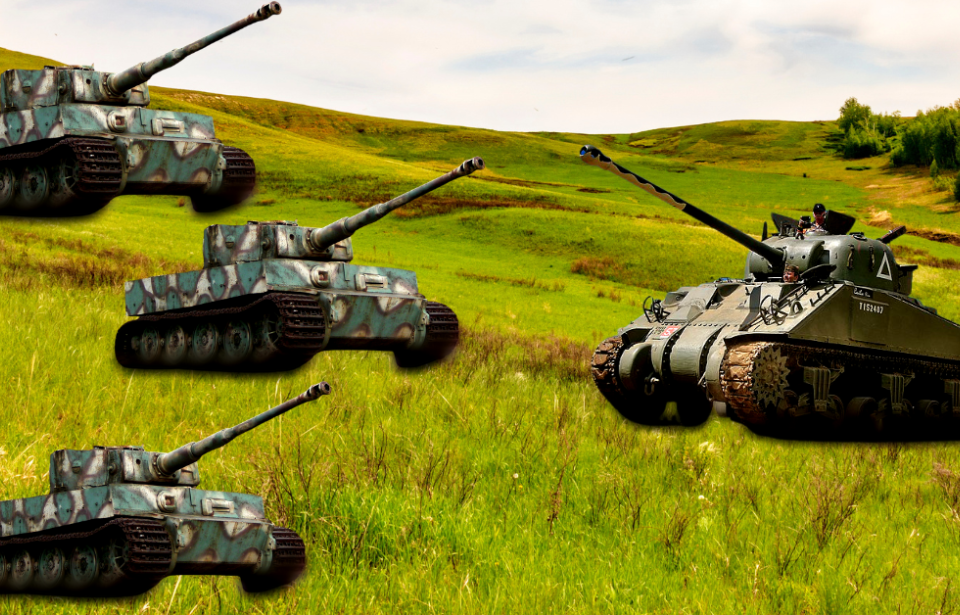Starting out as an employee at a shoe factory, 17-year-old Joe Ekins never could have imagined he would be credited with taking out not just one German Tiger tank, but three. Serving as a gunner in France during Operation Overlord, and with little training on how to fire the gun of a Sherman Firefly, he successfully fought back against the Germans.
Joe Ekins believed it was his moral obligation to serve
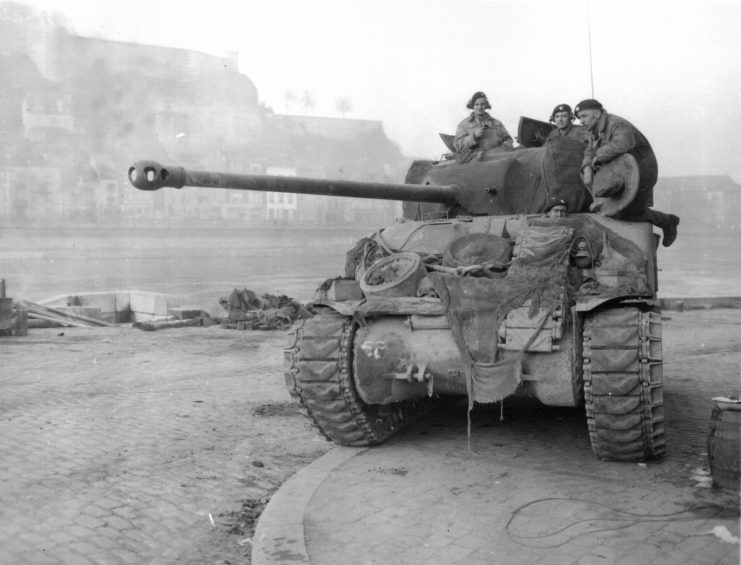
Joe Ekins was born on July 15, 1923 in Yielden, Northamptonshire. When he was 17 years old and working at a shoe factory, he volunteered with the 1st Northamptonshire Yeomanry, feeling it was his moral obligation to aid in the fight against Germany. After minimal training, Ekins was assigned as a Sherman Firefly gunner with A Squadron.
The Firefly was a modified version of the M4 Sherman, featuring the powerful Ordnance QF 17-pounder anti-tank gun. Capable of penetrating 233 mm armor from around 1,000 meters, it was the British Army’s counter to the powerful tanks being manned by the Germans – in particular, the heavily-armored Tiger I.
Modifications to the M4 Sherman were of the utmost importance to British Prime Minister Winston Churchill, with 2,000 being reworked over the course of the Second World War. While powerful, they did have faults. The muzzle flash was bright enough to cause night blindness when fired in the dark, and the recoil was immense.
Operation Totalize
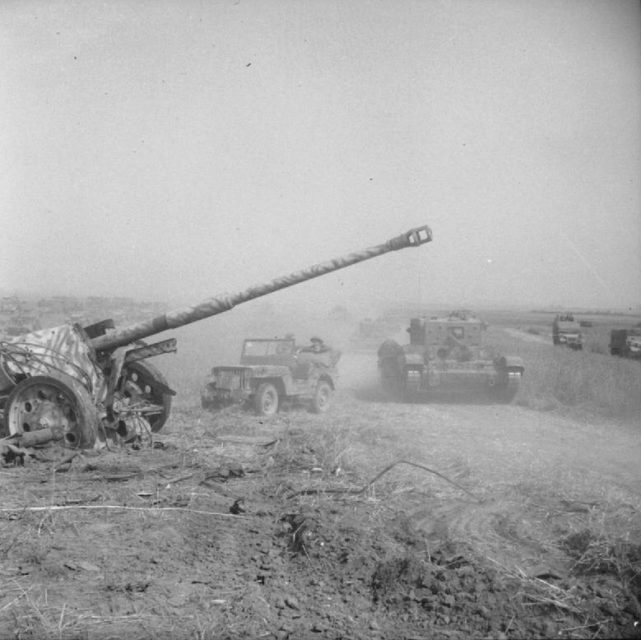
Before getting into Joe Ekins’ incredible actions on August 8, 1944, we first need to discuss the operation he was involved in. After landing in Normandy on D-Day, he and the 1st Northamptonshire Yeomanry were tasked with taking part in Operation Totalize.
Occurring between August 8-9, it was an Allied offensive centered around the First Canadian Army, which had been activated the previous month, on July 23. The aim was to break through the German defenses south of Caen, east of where the Allied forces had been stationed. From there, they would capture Falaise, with the ultimate goal being to collapse the German front and cut off any sort of retreat.
While resulting in an Allied victory, Operation Totalize caused high losses on both sides. The Allied forces, which consisted of troops from Canada, Poland and the United Kingdom, suffered 1,256 casualties, while the Germans saw 3,000.
Three Tiger tanks approach Joe Ekins’ position
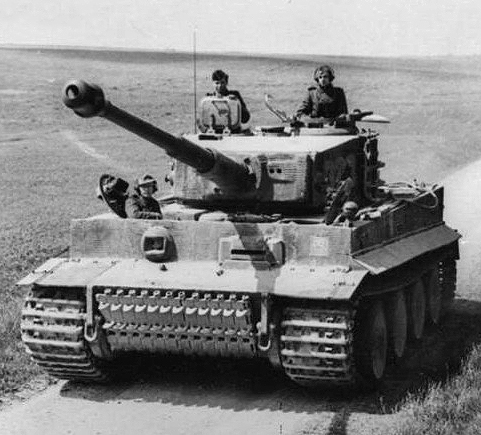
On August 8, 1944, the 1st Northamptonshire Yeomanry and elements of the 51st (Highland) Infantry Division arrived in Saint-Aignan-de-Cramesnil. While B Squadron was ordered to remain, A and C Squadrons moved south and positioned themselves in a wooded area, which provided them with some cover. C moved to the east side, A was stationed along the southern edge and “3 Troop” sat on the western side.
Joe Ekins was part of A Squadron’s “3 Troop” and was sat in his Sherman Firefly, awaiting the German arrival. Before long, seven Tiger I tanks appeared. However, from their position, Ekins and his comrades could only see three. As he later recounted to The Tank Museum, his commander waited until the enemy was about 800 yards away before ordering his men to fire.
Ekins was told to aim at the rear of the three Tigers, securing a hit after just two shots. During the engagement, his Firefly was hit in the turret, but remained operational. He managed to hit a second enemy tank, which exploded, leading to the assumption the shot had struck the Tiger’s ammunition.
“By this time, the first tank of the three realized what’s going on, and he was starting [to mill] around and looking for cover,” the gunner later explained. “So it turned a bit towards us, but we pulled out and fired two shots at him – and hit him, as well. And he went up, and I thought, ‘Thank God it’s not gonna be us today.'”
In the span of just 12 minutes, Ekins had taken out three German Tiger tanks. This was followed shortly after by the destruction of a Panzerkampfwagen IV.
Did Joe Ekins take out the Black Baron?
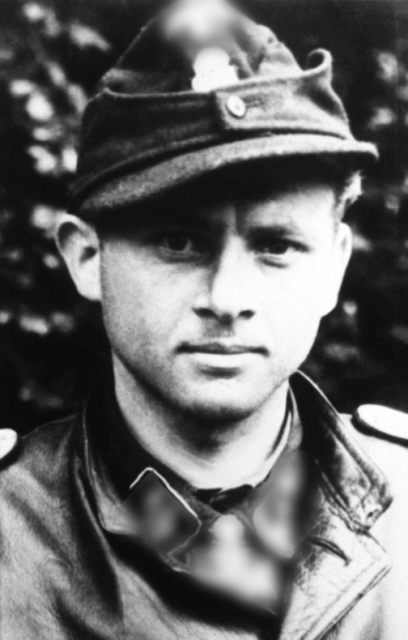
Among the tank personnel Joe Ekins is believed to have taken out on August 8, 1944 is Michael Wittmann – better known as the Black Baron. He was among the Waffen-SS‘ best tank commanders, with a confirmed 138 Allied tanks taken out, earning him the distinction of “panzer ace.”
Among Wittmann’s most noteworthy engagements were the Battle of Villers-Bocage, where he ambushed elements of the British Armoured Division, and the German invasion of the Soviet Union – AKA, Operation Barbarossa. His success on the battlefield led the German government to use his image as propaganda.
A number of units took credit for taking him out: the 1st Polish Armoured Division, the 144th Regimental Royal Armoured Corps, the 4th Canadian Armed Division and the Second Tactical Air Force, Royal Air Force (RAF). However, historians have since agreed that it was likely Ekins who fired the fatal shot, placing Wittmann within one of the three Tigers destroyed by him.
Joe Ekins returned to a normal life after the war
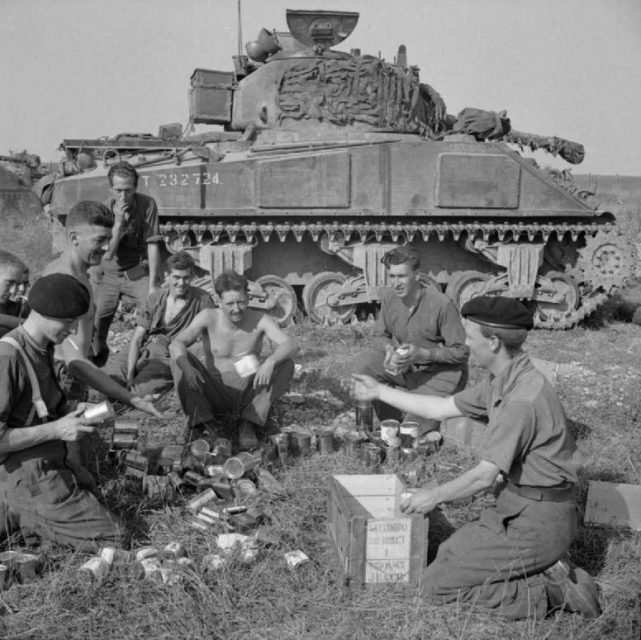
Following Operation Totalize, Joe Ekins was reassigned as a radio operator within another tank in A Squadron. He held this position until the end of the war, and was discharged in 1945 after contracting diphtheria.
More form us: The Last Defenders of the Führerbunker Were French SS Troops
Back in the UK, Ekins returned to the shoe factory at which he’d previously worked. He later rose up the ladder and became the manager of a number of different shoe companies, and was even a partner in a business that promoted the use of computers. He retired in 1988, and just over two decades later, on February 1, 2012, he passed away. Ekins was 88 years old.
